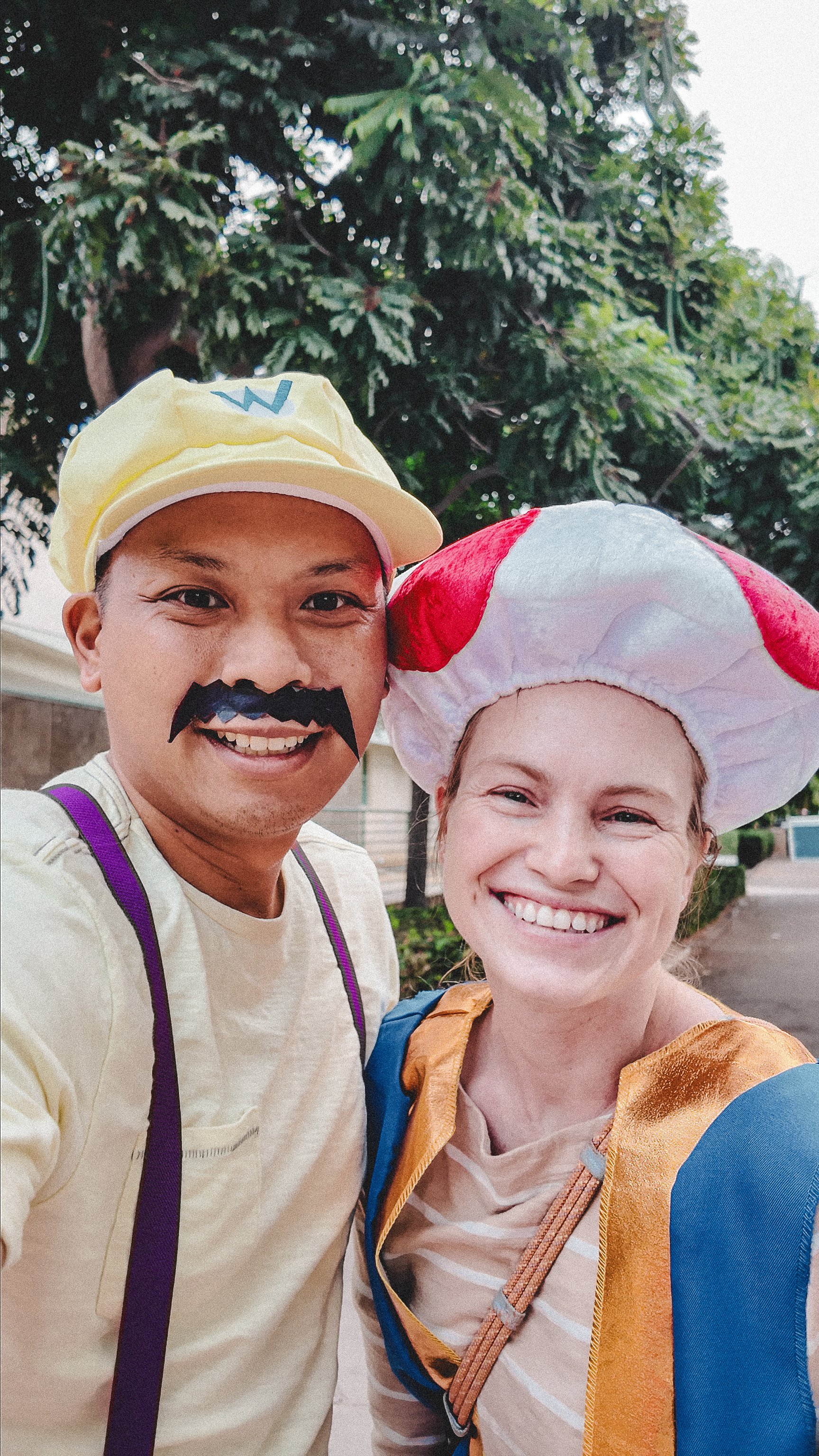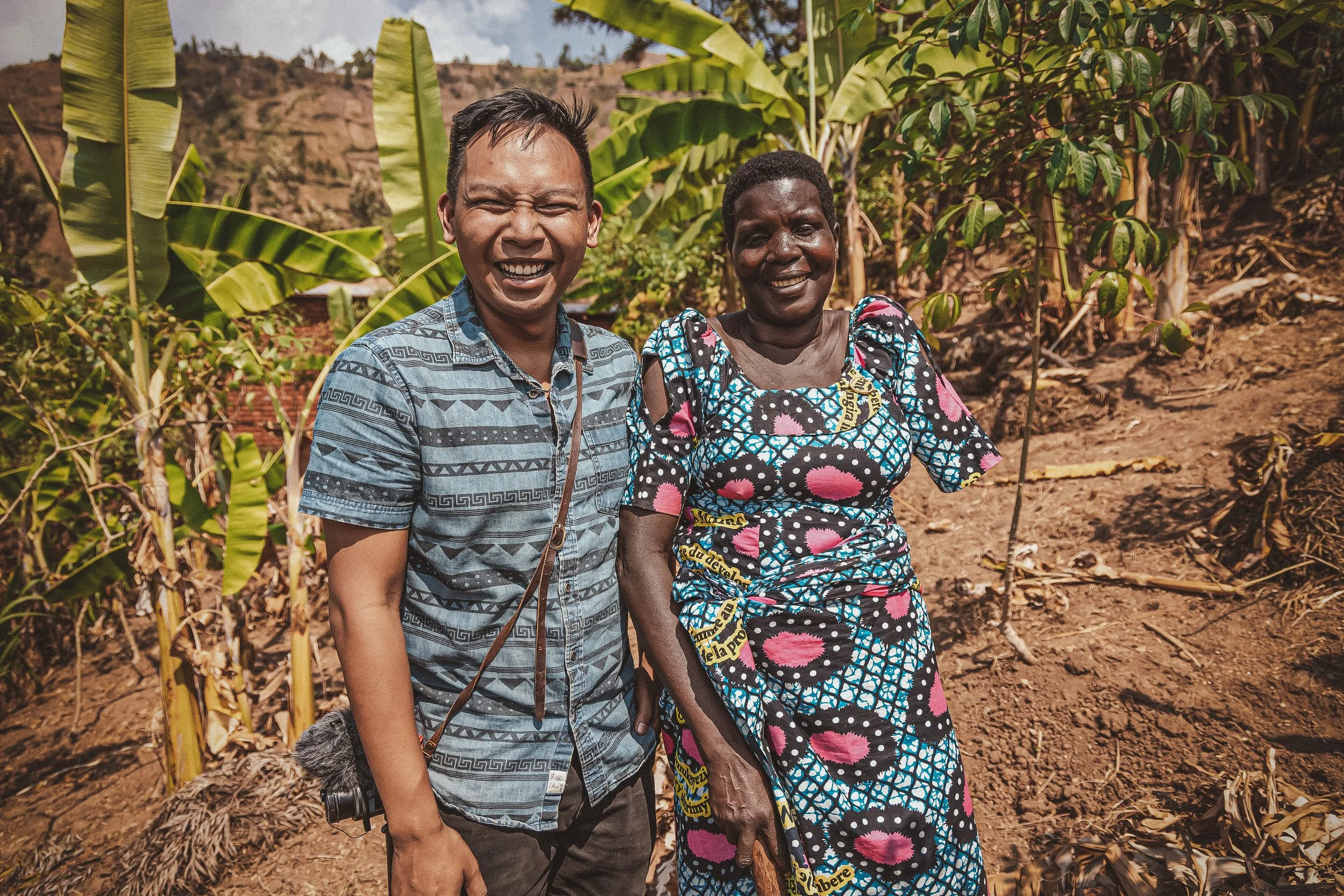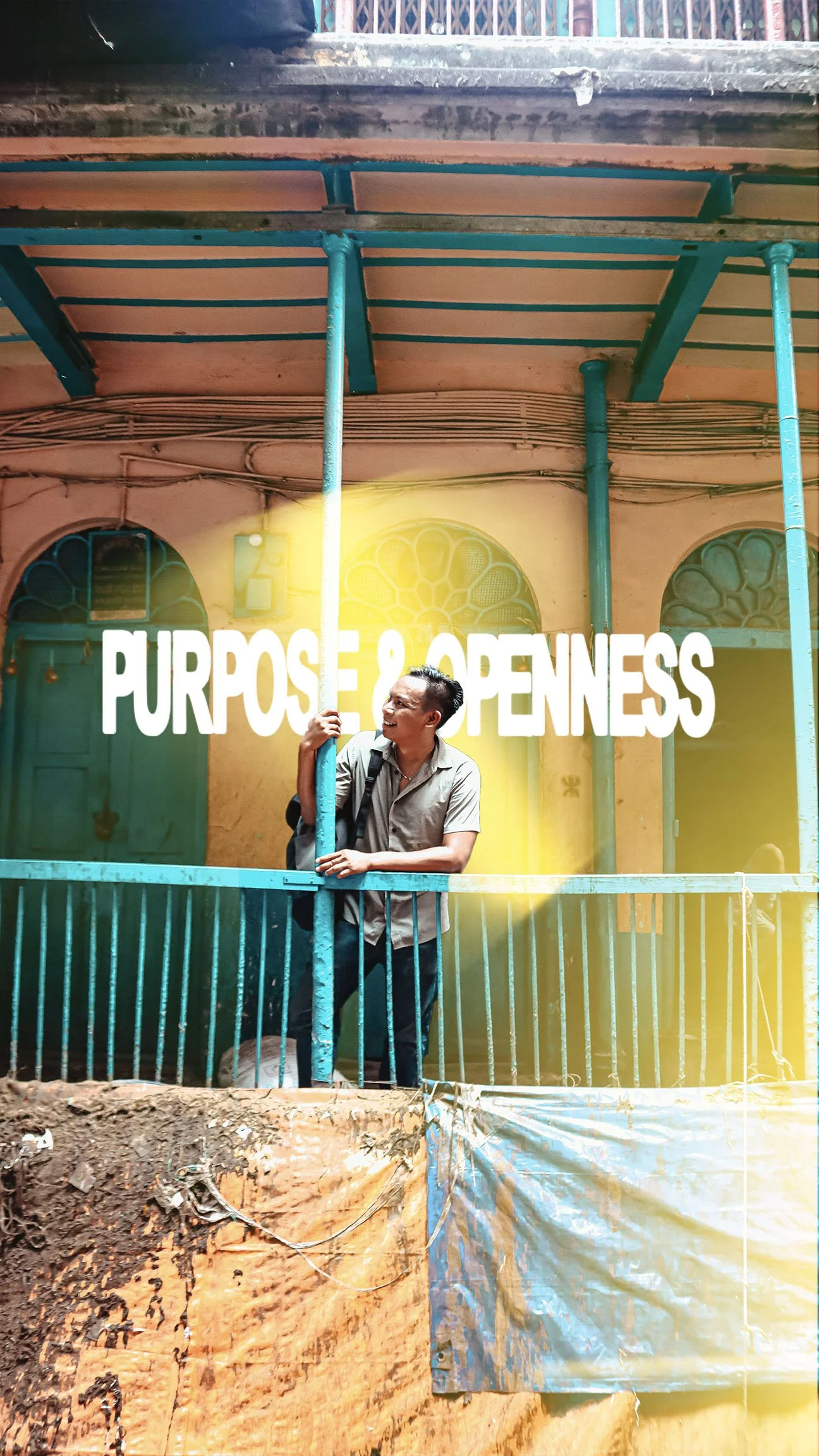Tracy, who I met in Guyana, is actually from North Carolina. She had a kid and raised him in Dominica, and after he grew up she and her husband moved to Guyana to open up a vineyard.
Guyana’s infrastructure is playing catch up with its growth, but back when they moved it was even further behind. They worked together to establish a cafe, lodges, and a home all around a private vineyard by the Essequibo River.
Her husband passed away a couple years ago, but she decided to carry on the dream. The vineyard gets regular visitors, many of whom stay in the cabins overnight. A hidden eco-retreat in Guyana.
She told me her story, interspersed with mystic interpretations and explanations of things that had happened. She told me my energy ran parallel to the bison, a creature many tribes identify with generosity and abundance. The plains-dweller typically makes little effort to evade hunters, enabling them to use the vast amounts of resources from its large body. Flattering interpretation, though I might put in some effort to escape some hunters, personally.
She then asked about my spice tolerance before preparing me a blackened cod with salsa and avocado, a precursor to the eventual rounds of wine she’d bring out.
Esperance & the Gift of Storytelling
Genuine storytelling takes a moment of connection
A few years ago I remember pitching a storytelling project to a former colleague. Someone with a lot of international development experience.
“How do we make sure we aren’t just parachuting in, videotaping people in a village, and leaving?” she asked. “I always worry that these projects will be extractive.”
I decided that pointing out how my budgets have barely had room for post production, let alone parachutes, was not actually a comforting response. The reality was that I shared her concern. So I shared my own confrontation with that struggle.
In the world of international development, where I work, stories have a lot of power to open eyes, and to put it plainly, pocketbooks. And while there’s nothing wrong with pairing the art of storytelling with the value of fundraising, problems emerge when we start seeing the stories simply as resources, losing sight of the human beings behind them.
The image my friend described, minus the parachutes, is a very real scenario.
Extractive storytelling. A blitz of cameras and tripods and lapel mics. Several takes of an interview, and then they’re gone.
Another colleague with decades of experience tells me how he’s seen too many examples of villages preparing feasts for filmmakers only to be disappointed by a team that obsessively tinkers with their gear, shows little interest in the welcome ceremony, and makes a quick exit to stay on schedule.
Sounds like an embarrassing endeavor to be a part of.
I’ve been working as a climate storyteller for close to a decade, and I truly love the work. The people that I get to meet is the best reward for chasing down stories around the globe. Over the years, the ethical storytelling has asserted itself as a top priority.
Once you start becoming aware of how storytelling can have a negative impact on a community despite good intentions, you start to become pretty mindful of your actions. And there’s nothing like a couple cringey stories to give that motivation an extra boost.
I know that in my experience, I haven’t been perfect. But still know that the idea of treating somebody’s story like a “good to procure” without actually spending time with the person on a human-to-human level is wrong. Wrong, but common.
And so I started asking myself what can we do in order to avoid this.
On the bulk of my storytelling trips, I play the role of director and conduct most interviews, while a film crew, typically one that is locally based, manages the equipment, set up, and recording. I’ve found that the time that it takes to get all that set up is often an opportune time for me to build rapport with the people I’m filming.
This has looked like everything from joking with a Mexican farmer about Taco Bell, to tasting an Ethiopian family’s home-brew. In Burundi, it meant learning a dozen words in the locally-spoken Kirundi, and using them to endear myself to the group I was about to interview.
Obviously, twelve words in a narrowly-spoken language wasn’t going to get me very far. But, I treated the encounter like some sort of improv game where I had to make up for a lack of vocabulary with physicality and intonation. And apparently, that worked. We actually found ourselves joking together, and laughing, and by the time I got around to interviewing Esperance, an amputee after the country’s civil war who moved back home to rebuild, she shared her life’s story with openness and tenderness.
This particular visit to Burundi was over two years ago. Last month, a colleague of mine managed to visit Burundi in a very different capacity, but he managed to run into Esperance and recognized her from the videos we produced.
“You know the first thing she said to me?”
“What was it?”
“Where’s Philippe?”
Hearing that moved me more than I was expecting to. Esperance remembered that day. I had too, of course. But something about knowing that an encounter left an impression that lingered on for both parties two years after the fact seemed significant.
It was a reminder that the work of storytelling is a gift. It’s a privilege that I get to have this as my day job, but its also a huge act of generosity on the part of my many featured subjects to share their life experiences with me.
Being able to retell your journey gives you a greater chance to own it. And the days you do so in front of a camera, knowing that it will be shared broadly, into countries you’ll never set foot in must be something.
I’m quite lucky in that my storytelling trips are once-in-a-lifetime experiences that I get to partake in every year. But I don’t want my fortune around that frequency to obscure the fact that for the people I talk to, this is a big deal. I don’t want the repetition to remove any of the reverence around a person’s story as they’re telling it.
My memories of Esperance are a reminder that stories shared with generosity and vulnerability need to be received with respect and good stewardship. That means putting care into crafting the video, the article, or whatever the finished product ends up being. That means making sure the story is presented to an audience in a way where they can receive it well. And that means not treating the visit like a one-and-done transaction.
At the heart of ethical storytelling is connection. Making the world a little smaller, and bringing an audience on one side of the planet in closer to a human being on the other side. It means finding the elements of humanity that can pierce through language barriers and unfamiliar settings.
You can’t possibly expect to accomplish any of that if you yourself aren’t making an effort at a real connection in the moment.
A world of thanks to Esperance for the reminder of how much that matters.
Hondo Valle
I drew Vicente from the Dominican Republic to celebrate Plant With Purpose turning 40 this year.
One thing I love about the organization I work for… and this is perhaps my very favorite thing… is that they’re all about the people. There’s so much respect and consideration for the dignity of each person in communities that aren’t often on the receiving end of that treatment.
When stewarding the stories we tell, I feel like this is the part of the organization I’m stationed in front of to protect. To make sure that each person’s dignity and humanity gets to be a part of their stories. That we aren’t putting words in their mouths, but listening and leaning in. That we aren’t treating real people like generic names in a story, but that we recognize the unique things that make them who they are.
Wine Tasting in Guyana
Wine in Guyana is a little different! As a tropical, mountainous country, it really doesn’t give you familiar tasting wines. Instead, you just gotta accept that you’re in the tropics and embrace the wide range of flavors provided by all kinds of fruits.
Tracy and her late husband opened up the Pandama Vineyard years ago. She let me taste a few of their different wines.
Struggle

Not gonna lie, life in Warioland hasn’t been the easiest lately, but we’re here.
Mother Teresa once said that if you want to change the world, go home and love your family.
There’s something about staring down big, overwhelming problems and meeting them with the smallest, simplest acts of good right now - packing lunchboxes, reading bedtime stories, taking care of after school pickups... that feels completely right.
40 Years of Plant With Purpose
Plant With Purpose turned 40 years old this year, and I made this video for the org to celebrate.
I came of age in the start-up era. It was sleek and sexy to be a team that came together just months ago. To know you’re in the early days. To make somebody feel like you’re about to strike it big and they happen to be holding your rookie cards.
So, I needed a little more hand-holding than most to really appreciate the significance of being established that long.
The methods are tried and tested. They’ve been developed with a depth of experience.
There’s a confidence that the commitment will remain, through the decades ahead.
And it means the work has been passed from generation to generation, often literally in the communities we get to partner with.
As an almost-eight-year member of this team, I haven’t even been around for a quarter of the 40 years. I haven’t even been alive for all of them. But I do think I’ve been around for some of the most exciting parts, and I owe that to all those who helped light and pass the torch.
Vince Carter
Vince Carter gets his number 15 retired in Toronto this week and it’s been cool seeing him get his flowers this year, from the Hall of Fame to the Raptors’ alt jersey.
From playing the early part of his career in those purple dino jerseys to the superhuman dunks, Vince has to be one of the most aesthetically enjoyable athletes I’ve seen.
Esperance
A teammate of mine recently got back from Burundi and had a chance to meet Esperance, the woman we featured in a video in 2022.
He told me the first thing she asked him was: “where’s Philippe?”
I’m not sharing that to say I’m famous in Burundi (though I’ve picked up some Burundian followers since visiting, so who knows?!) But to me, this was such a powerful reminder that the work of storytelling isn’t just about dropping in, recording some sound bites and peacing out.
For the people who allow us to share their perspectives and experiences with the world… it’s a momentous occasion. When done right, it’s an affirmation of their dignity and legacy. There’s a real connection made.
I’m real privileged and fortunate. These storytelling trips are once-in-a-lifetime experiences and I get to have them every year. But I don’t want that to obscure how transformational each one can be.
Purpose & Openness
I suppose there’s no magic formula for a perfect trip, but if there was, I imagine it would look like the paradoxical pairing of purpose and openness.
Hope
Words I shared two years ago that seem to matter even more now.
Plant your feet.
Rhys is Five

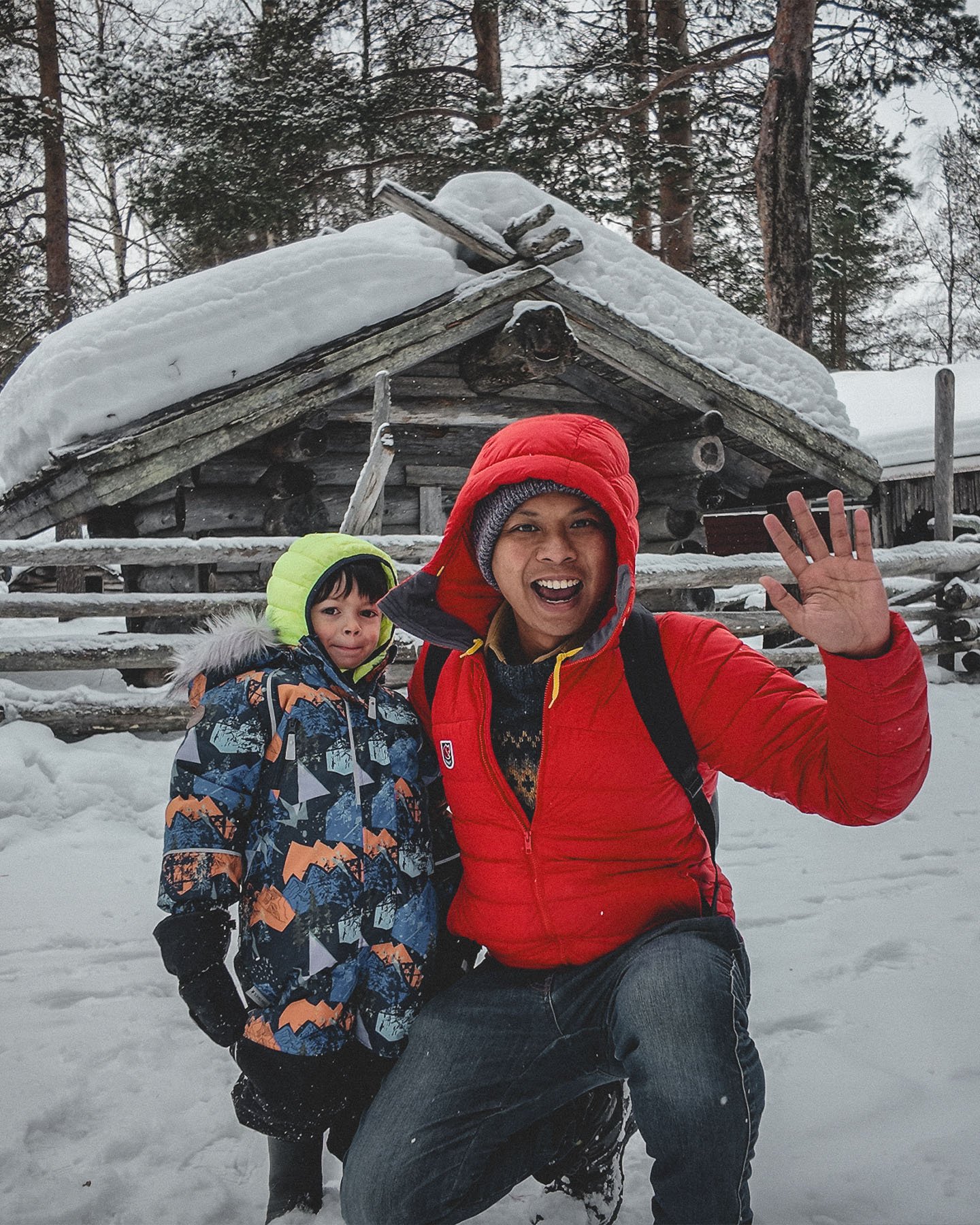

Rhys, that was one heck of a fourth year, man!
You graduated the daycare center you’d been at since 18 months, you started up at your new school and made some new friends. You unified the Iberian Peninsula by always referring to our trip as Portugalandspain. You even got out of a Portuguese Escape Room without speaking any Portuguese.
You went as far North as I’ve ever been, meeting Santa in the Arctic Circle, and braved the winter in Estonia and Finland. You went to your first monster truck rally, which happened to be my first monster truck rally, and gained a taste for Korean hot dogs. You’ve developed a love and respect for Mario, and I can’t wait for our family Halloween costumes this year.
Most of all, you’re as kind and sincere of a kid as I’ve seen. I love being your dad, and I love that you’re mostly at an age where your memories are sticking around longer, cause we’ve been making some good ones. Best era of my life truly started when you were born.
Trying to stay creative in chaotic times
Favorite photo from this month:
It’s been a bit of a rocky month, but this is a shot from my freestyle hip hop improv show which was one of the brighter spots. I haven’t had a post-show improv high like this one in quite a while!
October Show & Tell
I’m typically a huge fan of October.
The weather finally begins to turn, and if you know me, I cannot wait for the hot days to wrap it up and give way to crisp air and fog. It feels like you can finally breathe again.
Unfortunately, in a bunch of other ways, it feels like I’m holding my breath through a lot of this month.
We’ve got a bunch of medical plates to spin in our family, which is probably the main source of chaos right now. At one point, I had to bring my kid with me to my own medical appointment because literally everyone else I could’ve had with him had a doctors’ visit of their own. Speaking of childcare, I’m also looking at different blocks of time where our usual sources of childcare during the day are unavailable.
This month, I’ve kind of felt like the goalkeeper of the family. The ball’s made it past a lot of other people on the field and I’m the last one up. It’s been a lot. Thankfully, my travels are mostly wrapped for the year, so I have the capacity for this. It’s just a lot.
In spite of it all, let me share with you what I’ve been making:
Short: Biodiversity Corridors
The church forests of Ethiopia on their own are really cool, and hopefully you’ve gotten the chance to see my video highlighting them. Also cool is the work my team at Plant With Purpose is doing to build corridors between the forests. Because the forests have turned into sanctuaries of wildlife, connecting them can help increase the genetic diversity of the species that have taken refuge in their spaces.
Art: Ebru Baybara Demir
Ebru Baybara Demir is a Turkish chef with a massive impact when it comes to social and environmental contributions. Part of her 2023 Basque World Culinary Award win came from her innovative solutions to societal challenges, such as the socioeconomic impact of the migrant crisis, climate change's effect on soil, and promoting local development through social gastronomy.
Creative Changemaker: Feedback on Feedback
As I find myself on both the giving and receiving end of feedback numerous times throughout the week, I’ve developed a bit of a sense about what makes for more effective feedback. Since we’re living in a time where it’s so easy to drop an opinion about someone’s work, having a good filter about what to listen to is quite important.
Art: Kyle Schwarber
You know what? I’d like to blame the Phillies for this month being such a difficult one for me. It all seems to have come apart right when they decided to play some of their worst games against the Mets for a quick elimination from the postseason. That said, Philly forever, so here’s a Wheaties inspired take on Kyle Schwarber, one of the players not drawing too much of my ire this month.
Short: Planting Native Species
Another eco-short from my time in Ethiopia. You know it was a good visit with the wealth of environmental stories I continue to have stemming from it. This one features a conversation with my friend and colleague Engeda on how to encourage communities to take their own initiative when it comes to planting native trees.
Art: Carlos Bulosan
For Filipino-American History Month, I had to drop a piece of the legendary poet Carlos Bulosan. Doing the photo research for this piece was fun… the man had some serious style with the suits! When drawing subjects who are mostly seen in black and white, I love swinging things in the other direction and going color saturated.
Visuals: New Thumbnails
I’m still going through this process of updating my YouTube thumbnails, disregarding the conventions of what gets clicks and simply putting up thumbnails that I like. This latest drop includes a series of adventures from Toronto, Thai Restaurants, Oaxaca, the Philippines, and the Sundarbans of Bangladesh.
Video: You Aren’t Just One Thing
One of the bigger lessons I’ve taken from this year is the beauty and importance of not just living to a one-dimensional label. The opposite of niching down. We are made to contain multiple interests, different roles in life, and many will not be obvious pairings. That’s what makes life fun.
Video: Fighting Fire with Local Knowledge
Are wildfires in Africa getting worse? According to this summer’s data, it sure seems like it. But local communities can do a lot to mitigate their fire risks. In this one I feature a community in Burundi at work to create firebreaks.
Some stuff I’m looking forward to in November:
The twins turn three! Also, they’re nearly potty trained. If I don’t have to buy diapers in 2025… wow.
I joined a new hip-hop improv squad. More on that later, but be on the lookout for Optimus Rhyme, show coming mid-November
We’ve got a bunch of medical plates to spin in our family, which is probably the main source of chaos right now. At one point, I had to bring my kid with me to my own medical appointment because literally everyone else I could’ve had with him had a doctors’ visit of their own. Speaking of childcare, I’m also looking at different blocks of time where our usual sources of childcare during the day are unavailable.
This month, I’ve kind of felt like the goalkeeper of the family. The ball’s made it past a lot of other people on the field and I’m the last one up. It’s been a lot. Thankfully, my travels are mostly wrapped for the year, so I have the capacity for this. It’s just a lot.
In spite of it all, let me share with you what I’ve been making:
Short: Biodiversity Corridors
The church forests of Ethiopia on their own are really cool, and hopefully you’ve gotten the chance to see my video highlighting them. Also cool is the work my team at Plant With Purpose is doing to build corridors between the forests. Because the forests have turned into sanctuaries of wildlife, connecting them can help increase the genetic diversity of the species that have taken refuge in their spaces.
Art: Ebru Baybara Demir
Ebru Baybara Demir is a Turkish chef with a massive impact when it comes to social and environmental contributions. Part of her 2023 Basque World Culinary Award win came from her innovative solutions to societal challenges, such as the socioeconomic impact of the migrant crisis, climate change's effect on soil, and promoting local development through social gastronomy.
Creative Changemaker: Feedback on Feedback
As I find myself on both the giving and receiving end of feedback numerous times throughout the week, I’ve developed a bit of a sense about what makes for more effective feedback. Since we’re living in a time where it’s so easy to drop an opinion about someone’s work, having a good filter about what to listen to is quite important.
Art: Kyle Schwarber
You know what? I’d like to blame the Phillies for this month being such a difficult one for me. It all seems to have come apart right when they decided to play some of their worst games against the Mets for a quick elimination from the postseason. That said, Philly forever, so here’s a Wheaties inspired take on Kyle Schwarber, one of the players not drawing too much of my ire this month.
Short: Planting Native Species
Another eco-short from my time in Ethiopia. You know it was a good visit with the wealth of environmental stories I continue to have stemming from it. This one features a conversation with my friend and colleague Engeda on how to encourage communities to take their own initiative when it comes to planting native trees.
Art: Carlos Bulosan
For Filipino-American History Month, I had to drop a piece of the legendary poet Carlos Bulosan. Doing the photo research for this piece was fun… the man had some serious style with the suits! When drawing subjects who are mostly seen in black and white, I love swinging things in the other direction and going color saturated.
Visuals: New thumbnail Artwork
I’m still going through this process of updating my YouTube thumbnails, disregarding the conventions of what gets clicks and simply putting up thumbnails that I like. This latest drop includes a series of adventures from Toronto, Thai Restaurants, Oaxaca, the Philippines, and the Sundarbans of Bangladesh.
Video: You Aren’t Just One Thing
One of the bigger lessons I’ve taken from this year is the beauty and importance of not just living to a one-dimensional label. The opposite of niching down. We are made to contain multiple interests, different roles in life, and many will not be obvious pairings. That’s what makes life fun.
Video: Fighting Fire with Local Knowledge
Are wildfires in Africa getting worse? According to this summer’s data, it sure seems like it. But local communities can do a lot to mitigate their fire risks. In this one I feature a community in Burundi at work to create firebreaks.
Some stuff I’m looking forward to in November:
The twins turn three! Also, they’re nearly potty trained. If I don’t have to buy diapers in 2025… wow.
I joined a new hip-hop improv squad. More on that later, but be on the lookout for Optimus Rhyme, show coming mid-November
Suriname is Underrated




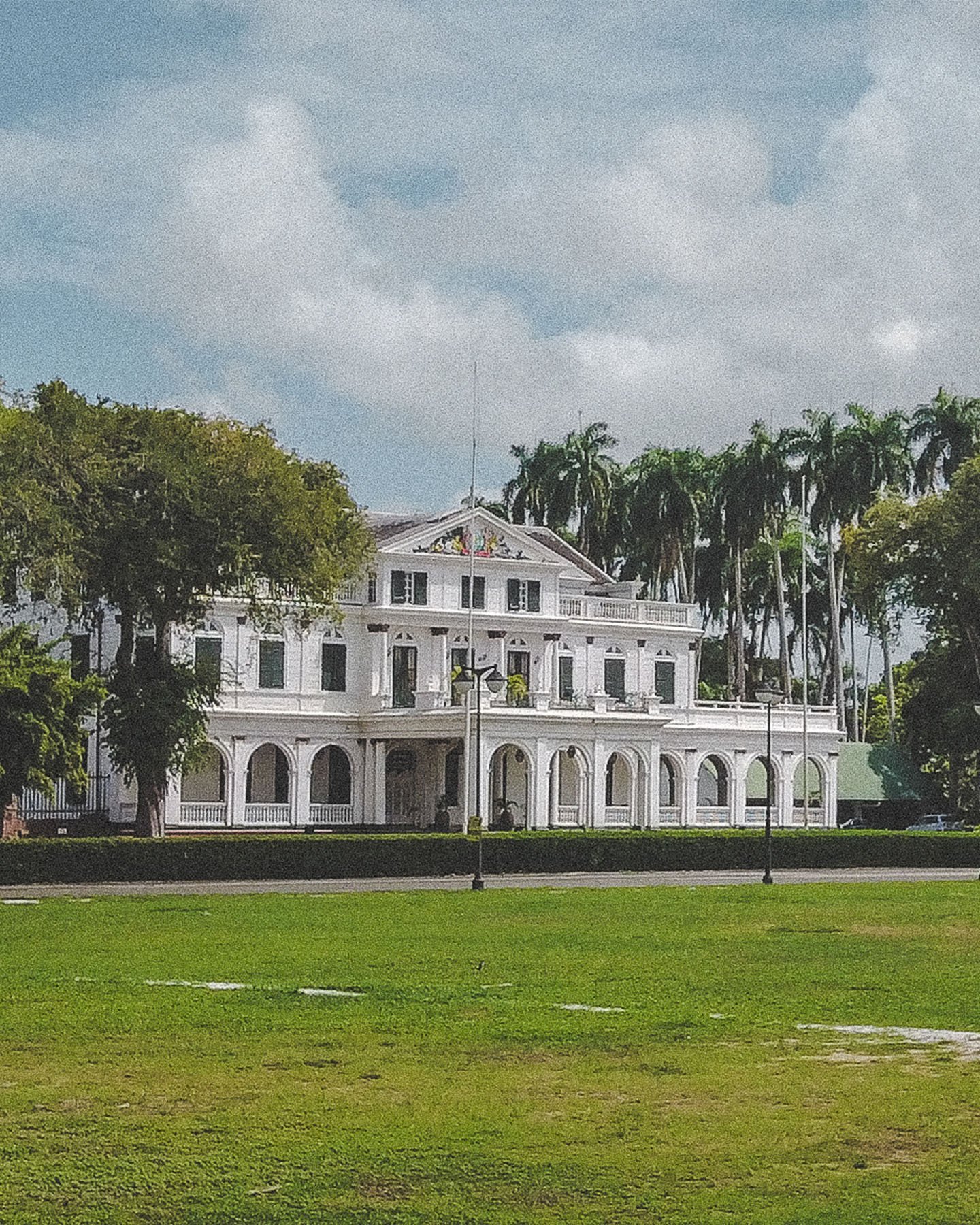


Some bonus snaps from the deliciously underrated Suriname!
I rarely hear it talked up, even among avid travelers. But here’s the case for Suriname–
🏘️ The capital is quiet and charming, and the center of Paramaribo is relatively safe and easy to walk around.
🍛 The food is incredible. Suriname’s cuisine blends together Indian, African, Caribbean, Dutch, and Javan influences… and it’s tough to find outside of Suriname or the Netherlands.
⛰️ Suriname has more in tact forest cover as a percentage than any other country. And there are abundant ecotourism opportunities that can be easily booked from within Paramaribo.
🎫 It’s not necessarily cheap, but also not too cost prohibitive. Transport might be the biggest cost, but even the flight there can often be done cheaply, via Miami.
Restaurant Farewell
At the risk of getting way too sentimental about something like restaurants, I’ll say this… be kind to the venues that host your day-to-day routines. You often don’t realize how baked in to the rhythms of your life they are until seasons change and they become strings of nostalgia.
And go ahead and support a locally owned family restaurant. Those things aren’t easy to own, and when you see someone put love into what they’re doing, don’t take that for granted. Remember, they also need revenue to keep it going.
Notes from Porto
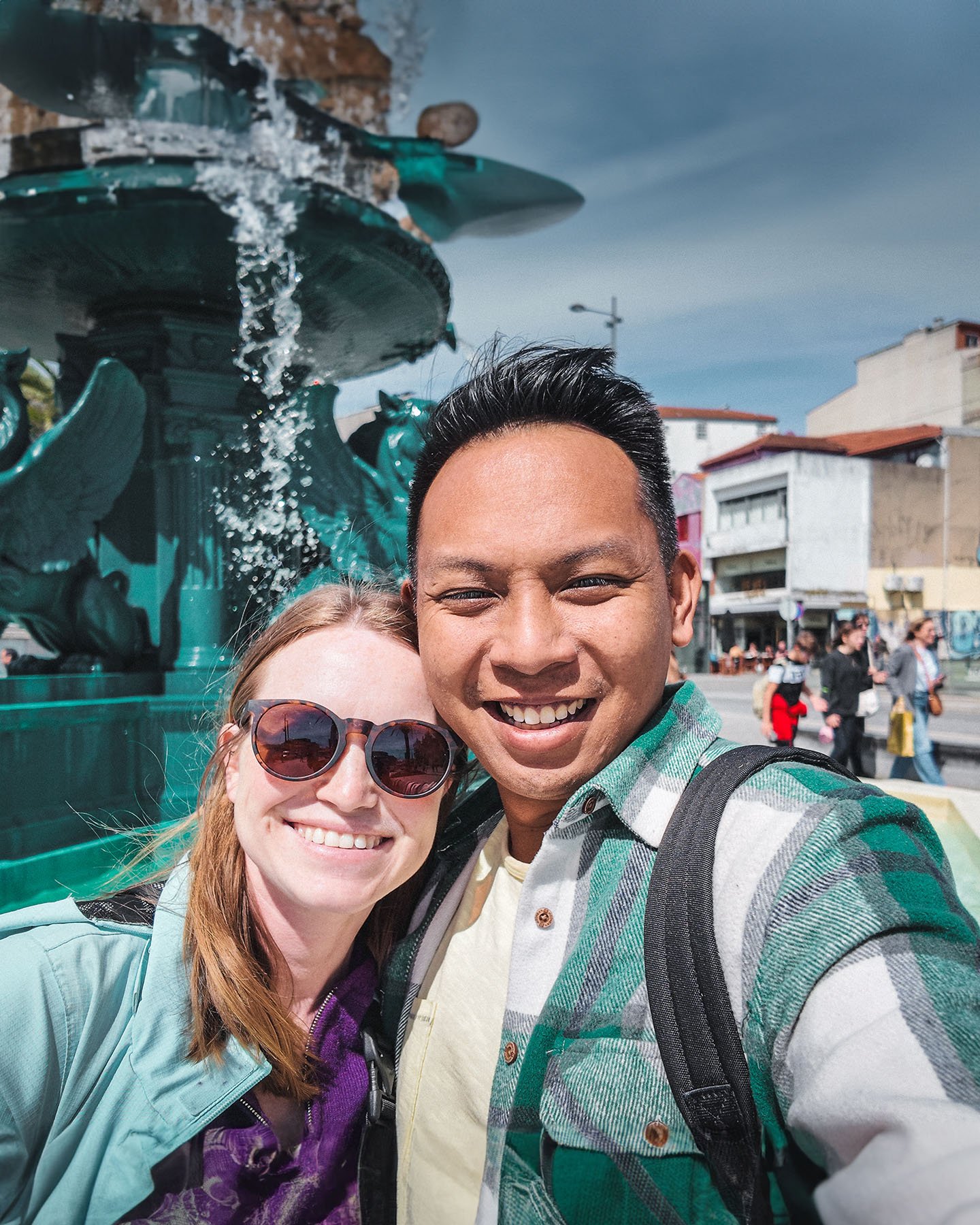
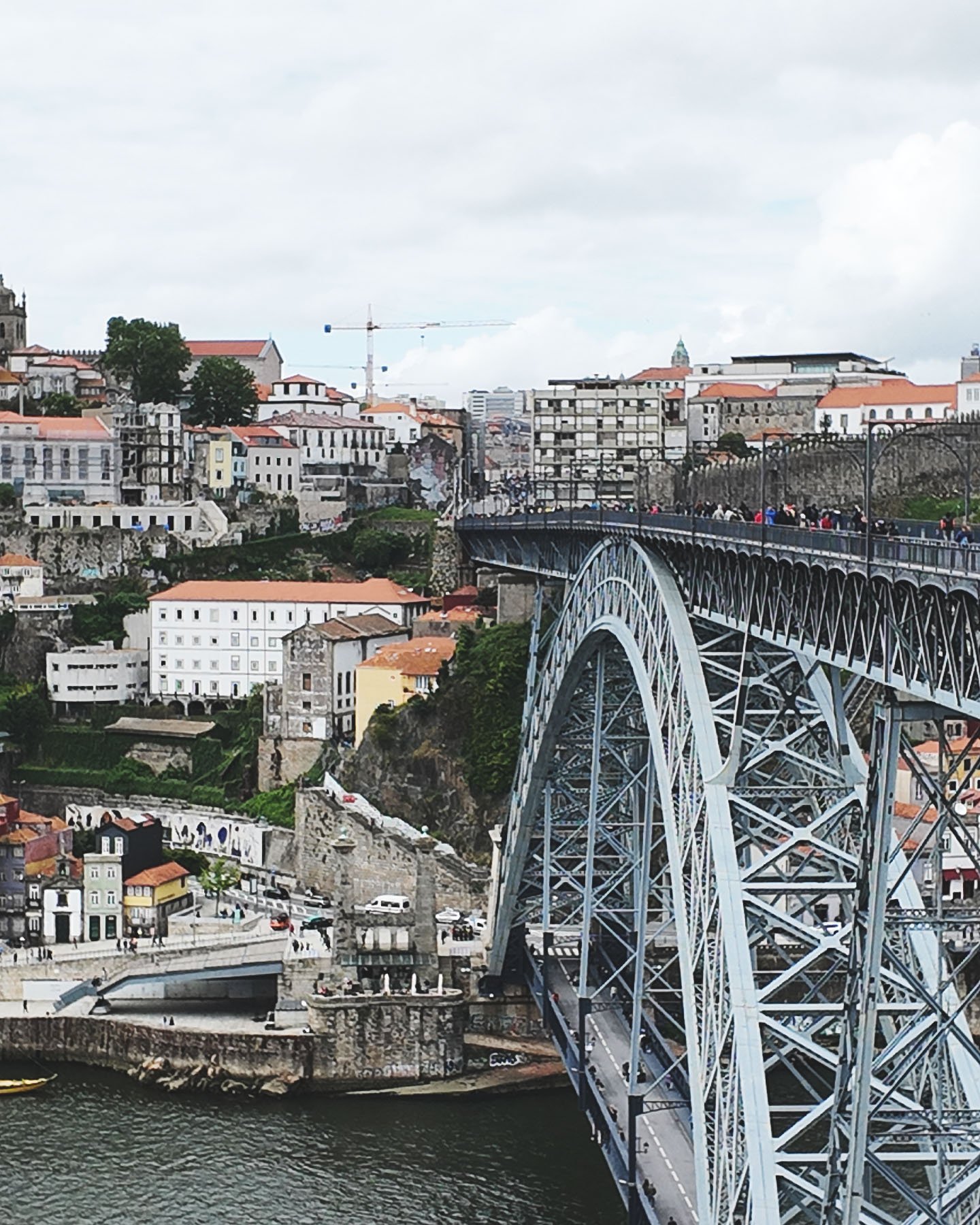
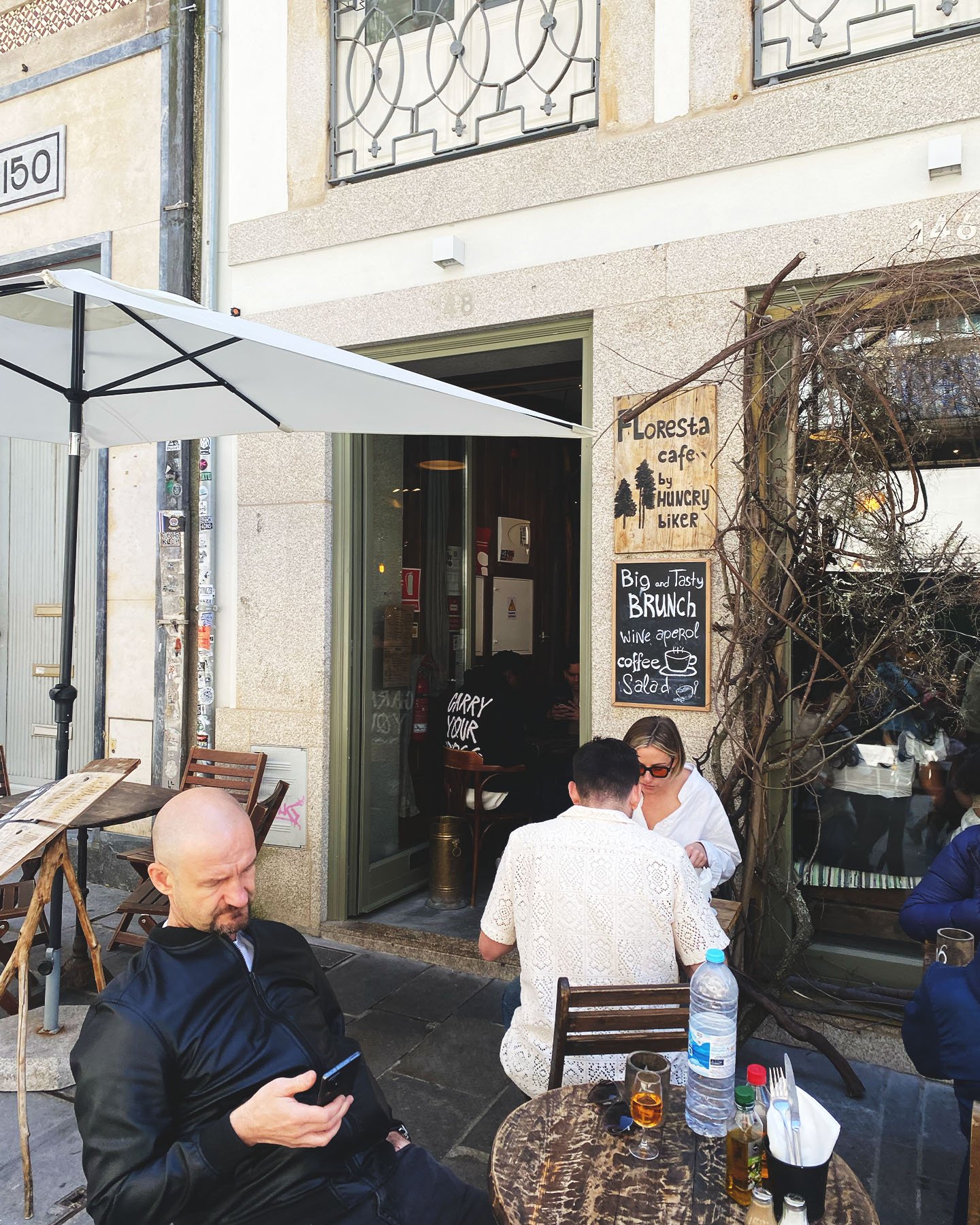
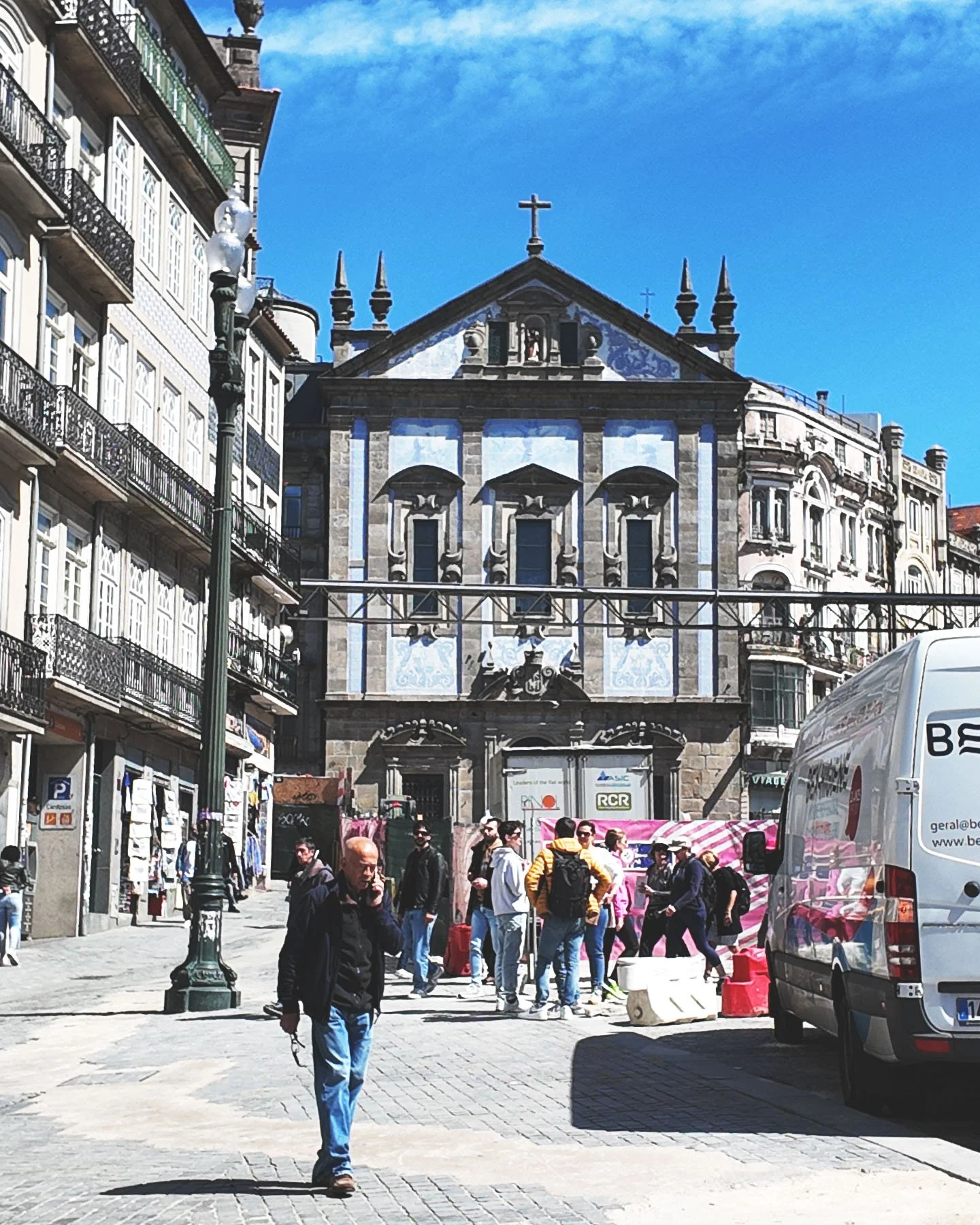
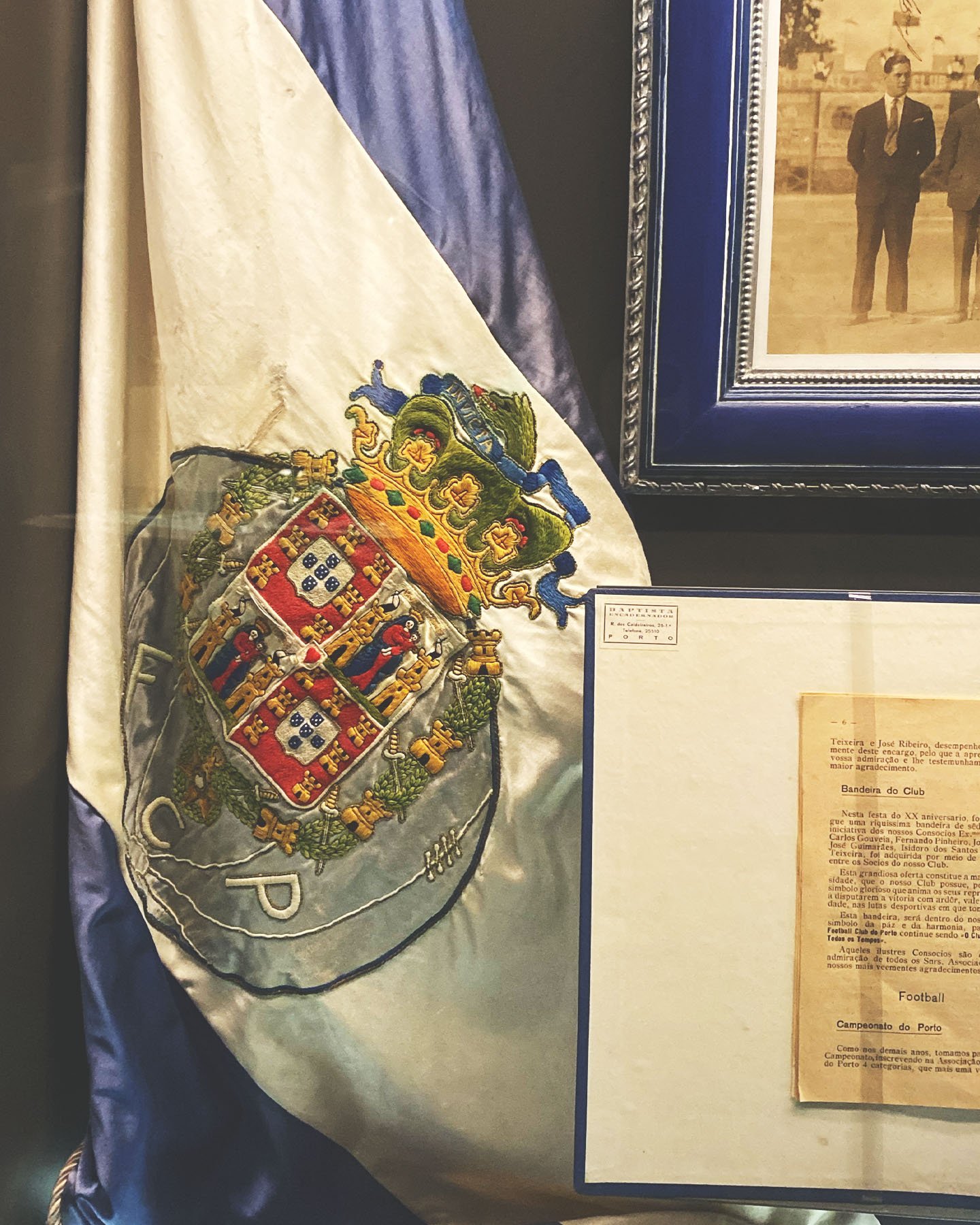
Travel notes from Porto:
🇵🇹 They do love their foamy drinks over here. Every smoothie or milky coffee concoction feels extra whipped.
🇵🇹 I found a cafe space for sale here. €50K. This is now my life’s backup plan. If someday things don’t work out and I need to flee the country, come visit me in my Portuguese coffee shop. I’ll find some YouTube tutorials so I can learn to make you an egg tart.
🇵🇹 The Porto City Park is now one of my top municipal parks in the world. There’s this open space by the pond, and I tell you, the inner peace I came upon in that meadow SLAPPED.
🇵🇹 I really miss the Bom Successo food hall right about now.
San Diego's Gastropocalypse
IS EVERY RESTAURANT AROUND ME SHUTTING DOWN?
Earlier in the week, I saw an article announcing that Las Cuatro Milpas, the beloved San Diego institution of Mexican food, was shutting down after 91 years.
Thankfully, these were just rumors. Loose interpretations of discussions around the property and passing the restaurant on to a next generation.
Still, part of what made it so easy to believe was the fact that this autumn, an unseasonably high number of San Diego restaurants have closed their doors. Hammond’s Ice Cream. Voltaire Public House. Even Tip Top Meats, which has been serving for 60 years.
It does make you wonder, what’s going on San Diego? Turnover in the restaurant world is part of the industry, but San Diego seems to cycle through eateries faster than any other place I’ve lived.
I don’t envy many in the food industry. From the kitchen staff through management, it seems like a pretty cutthroat and chaotic environment.
In a lot of industries, the misery is typically concentrated with the frontline workers, as ownership sits pretty. But being a restaurant owner seems stressful and tortorus as well, unless you’re some sort of mega-owner at the top of a chain or conglomeration. But the fail rate is high, the burnout rate is high, and you better have a legitimate passion for what you’re doing.
Thankfully, I have met so many chefs and people in the food world who do have it.
Passion.
And they’re the perfect reminder that the root of the word passion basically means suffering. Your passion is what you’re willing to suffer for.
So, when a beloved independent restaurant closes up shop, it’s a pretty sad day. I mean, even the nostalgia of a big corporate chain brings up some feels (anyone else grow up with a Hungry Howie’s?), but of course, its even more tragic when what’s lost is a person’s passion project that they poured a lot of their soul into.
It’s made me wonder what it is about San Diego that makes it so prone to restaurant closures.
The obvious culprit would be the cost of living. And San Diego is expensive. At one point this year, it clocked in with the highest cost of living. Those costs tend to feed off each other, as more expensive rents necessitate higher wages, which increase operational costs.
And yes, all this is more manageable when things are distributed a bit more equitably throughout an organization, but it’s the small businesses that have their hands tied up.
I suppose this makes me feel a little more justified in a habit I picked up during the pandemic, of eating out a little bit more and convincing myself that in doing so, I’m doing my part to help keep local business afloat.
And to be sincere about it, that means actually eating out at a family joint that could actually appreciate and use the support. Not, like, Din Tai Fung, much as I love those dumplings. An actual migrant owned restaurant that helps connect people with culture is a nice bonus.
With all the announcements of restaurant closures the past couple of months, it’s kept me busy on a little quest to try and eat at as many of them as possible. That hasn’t been easy in many cases, as some of the most beloved institutions have had lines out the door since their announcements. But, hey, it’s been a tasty, bittersweet challenge.
For me, the most essential ‘last meal’ happened at a quiet curry shop in Pacific Beach. World Curry.
As its name implies, they spent close to 20 years serving up curry from just about every cuisine that had a curry to offer. Thai, Japanese, Indonesia, Indian, and even British curries were on the menu, and it was the British dish that had a spicy enough level of heat for people to get their photo on the wall for completing it.
The deeper reason I knew I needed one more meal here was a friend of mine. Years ago, we worked together at a nearby office, and World Curry was a frequent lunch suggestion. Three years ago she passed away unexpectedly, and it seems like recently her memory has been surfacing in all kinds of places.
I went to World Curry partly to relive all those lunch visits over one more plate of Balinese Beef.
While eating, I managed to get a little moment to talk to the shop owner. She shared a little bit about how things slowed down for them over the past couple years. I suppose I’m a classic example of why- with fewer people “going into the office,” lunch rushes have become a thing of the past.
I then told her about my friend and how much she loved her curry. I know closing a restaurant after 20 years isn’t an easy thing to do, but if the knowledge of someone’s fond memories there makes things any easier, I thought she should know. Plus, its one more person in the radius of my friend’s legacy.
At the risk of getting way too sentimental about something like restaurants, I’ll say this… be kind to the venues that host your day-to-day routines. You often don’t realize how baked in to the rhythms of your life they are until seasons change and they become strings of nostalgia.
And go ahead and support a locally owned family restaurant. Those things aren’t easy to own, and when you see someone put love into what they’re doing, don’t take that for granted. Remember, they also need revenue to keep it going.
Plant Native Species
When you plant trees, working with native species is best. Those species have spent millennia adapting to their surroundings and developing compatibility with the other living things around them. Planting an unfamiliar species can disrupt ecological balance and create a lot of unintended problems.
I appreciate how Engeda’s team in Ethiopia is able to generate such a strong local enthusiasm for native trees without being prescriptive and while respecting the autonomy of the local community members. Kindness is showing people that you trust their decision making.
Carlos Bulosan
“America is in the hearts of men that died for freedom; it is also in the eyes of men that are building a new world.”
“This is also what critical reading of our histories makes possible: we cannot repair what we cannot reconcile; we cannot truly know what we will not truly see.”
– America Is In The Heart
Filipino-American History Month! This year’s FAHM art piece could be no other than Carlos Bulosan, the activist poet.
The fact that Bulosan’s words can be celebrated and canonized today is no small thing. He was a labor organizer, a conscious writer, and a voice for anticolonial struggles going on in the Philippines. In other words… he made a few enemies along the way! He was blacklisted, harassed by the FBI, and often in poverty and poor health due to the struggles. But, true to his community-based orientation, his circle of friends took good care of him. Though he spent the later part of his life couch-surfing, the friends who hosted him along the way held on to his work.
Feedback on Feedback
Why you need to know how to recognize worthwhile feedback
I’m in a creative role, where I find myself on the beginning and receiving end of creative feedback quite frequently.
Since we’re living at a time when it’s really easy to hear other people’s opinions about things you put out into the world, I think it’s important to differentiate between opinions and feedback. It’s important to know what good feedback looks like, both so you can give it, and so you can filter whose voices are more ideal to listen to.
1) Good feedback is less about catering to individual taste as it is about accomplishing an objective.
Certain things just aren’t up my alley. Heavy metal, period piece dramas, and the majority of fantasy novels fall into that category. That doesn’t mean things created in those genres can’t be high quality. Metal drummers often come up with some of the most sophisticated and impressive polyrhythm displays… I’d just file them into the good, but not-for-me container.
Givers of good feedback recognize the inherent subjectivity of art and can step outside the need for things to appeal to them.
Good feedback makes sure to understand the objective of a piece of art.
“Why are you making this? Why does the world need it?”
Rather than trying to make sure a creative work is aesthetically appealing to their tastes, a good feedback giver will simply try and make sure creative decisions are serving their intended purposes.
2) Good feedback aims to bridge the gap between intent and impact.
It clarifies and honors what a creator is trying to do and removes barriers that are getting in the way of that happening.
You can usually tell someone gives strong feedback when they frequently ask “why did you decide to do this?”
It’s a question I’ve been trying to ask more when I’m in the reviewer’s seat.
When you ask this you’ll either get a lot of clarity around what a creator was aiming to do, so you’ll be able to give more focused suggestions, OR you’ll perhaps discover it was a decision made out of habit or some other assumption. And you candle it more intentional.
Approaching creative feedback from the framework of:
What is your goal?
How can we remove the things getting in the way of that goal?
can help steer away from clashes over subjective tastes and personal attachments and towards the shared goal.
3) Good feedback givers demonstrate trust in the creatives.
Poor feedback often sacrifices the future development of the creative in favor of strong-arming a short term decision.
But good feedback can turn the project at hand into a springboard for sustained creative growth.
What makes the difference? For me, a key element would have to be trust.
When a feedback-giver lacks trust, this quickly and frequently takes the form of micromanaging. Feedback is more oriented around whats than whys. Decisions are forced and expedited and critical thought is uninvited.
Not only can a lack of trust be insulting, it also essentially takes the creativity out of the assignment given to a creative. They are no longer creating but simply executing.
4) Good feedback recognizes when a good idea just might not be in the right spot
This goes hand in hand with trusting the creative.
It’s rare that a creative decision is bad… more often than not it’s just distracting or confusing. And that’s because its in the wrong spot. Good feedback often includes the line “maybe that could go somewhere else,” and often, that somewhere else ends up being a totally different project.
Good feedback frames things around opportunity and possibility. I love this quote from Todd Henry:
“Feedback isn't just about pointing out what's wrong, but also about painting a picture of what's possible.”
Creativity is about making connections and that requires you to see from beyond your own immediate vantage point. That means the input of somebody else is extremely valuable.
That’s why it’s important to develop both the skill of giving good feedback and the awareness of whose feedback is worth paying attention to. And that is served by knowing what’s at the core of good feedback.
The Bug Bites Will Be Worth It





Working title for the memoir: The Bug Bites Will Be Worth It










